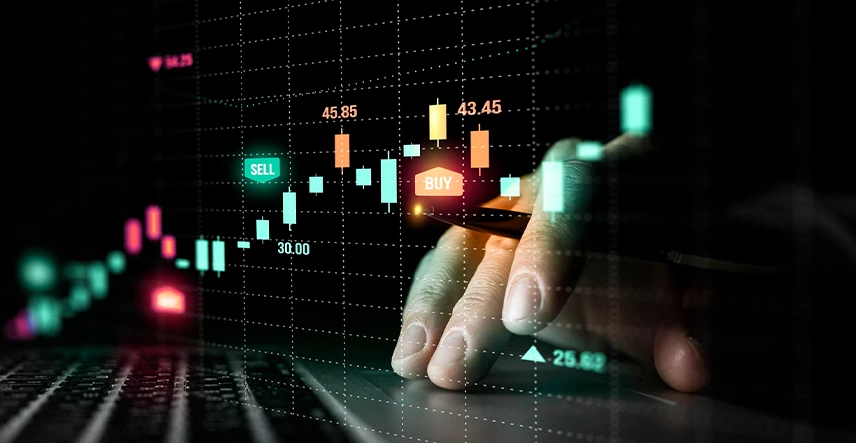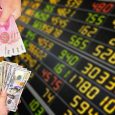Table of Contents
Forex trading and binary options are two popular ways traders use to make money from market changes. While both can be rewarding, they work differently and suit different trading styles. This blog will explain the features of binary options and forex trading, how they work, and the risks and rewards of each in simple terms.
Forex trading, also known as foreign exchange trading, involves buying and selling currency pairs to profit from changes in exchange rates. Binary options, on the other hand, are financial derivatives that allow traders to speculate on the price movement of various assets, including currencies, within a fixed timeframe. This guide will delve into the intricacies of these two trading methods, providing a clear understanding for beginners and seasoned traders alike.

Understanding Binary Options
What are Binary Options
Binary options are financial instruments that offer a fixed payout based on a yes-or-no proposition. The name “binary” refers to the fact that there are only two possible outcomes: either the option settles at a predetermined value (typically $100) or it expires worthless ($0).
How Do Binary Options Work?
Binary options work by allowing traders to speculate on the direction of an asset’s price within a specific timeframe. For example, a trader might predict whether the price of a currency pair, such as EUR/USD, will be above or below a certain level at the option’s expiration time. If the prediction is correct, the trader receives a fixed payout. If not, the trader loses the investment.
Key Features of Binary Options
- Fixed Risk and Reward: The potential profit or loss is known in advance, allowing traders to manage their risk effectively.
- Short-Term Trading: Binary options typically have short expiration times, ranging from a few minutes to a few days.
- Simplicity: Trading binary options is straightforward, making them accessible to beginners.
Example of a Binary Option Trade
Suppose gold is trading at $1,200 per ounce, and a trader believes it will rise to $1,210 by the end of the day. The trader buys a binary option for $50, with a payout of $100 if the prediction is correct. If gold reaches or exceeds $1,210, the trader earns a $50 profit ($100 payout – $50 investment). If gold falls short, the trader loses the $50 investment.
Understanding Forex Trading
What is Forex Trading?
Forex trading involves the exchange of currencies on the foreign exchange market, the largest financial market in the world. Traders buy and sell currency pairs, such as EUR/USD, to profit from changes in exchange rates.
How Forex Trading Works
- Currency Pairs: Forex trading is conducted in pairs, with one currency being bought and the other sold. For example, in the EUR/USD pair, the euro is the base currency, and the US dollar is the quote currency.
- Leverage: Forex brokers often offer leverage, allowing traders to control larger positions with less capital. For example, with 50:1 leverage, a $1,000 investment can control a $50,000 position.
- Market Hours: The forex market operates 24 hours a day, five days a week, providing ample trading opportunities across different time zones.
- Analysis: Successful forex trading requires analyzing market trends, economic indicators, and geopolitical events that influence currency movements.
Key Features of Forex Trading
- High Liquidity: The forex market is highly liquid, allowing traders to enter and exit positions with ease.
- Volatility: Currency prices can fluctuate significantly, offering the potential for high profits and losses.
- Diverse Strategies: Traders can employ various strategies, such as day trading, swing trading, and long-term investing, to suit their goals and risk tolerance.
Example of a Forex Trade
A trader believes the euro will strengthen against the US dollar and buys 1,000 units of EUR/USD at 1.1000. If the exchange rate rises to 1.1100, the trader makes a profit of $100 (1,000 units x 0.0100). If the rate falls to 1.0900, the trader incurs a $100 loss.
Binary Options vs. Forex Trading-
Similarities
- Market Accessibility: Both binary options and forex trading are accessible to retail traders through online platforms.
- Speculation: Both involve speculating on the price movements of currencies and other assets.
Differences
- Risk and Reward: Binary options have a fixed risk and reward, while forex trading involves variable profits and losses based on market movements.
- Trading Strategies: Forex trading offers a wider range of strategies, including scalping, day trading, and swing trading, whereas binary options are more straightforward.
- Regulation: Forex trading is typically more regulated than binary options, which can be prone to fraudulent schemes.
Risks and Rewards of Trading Forex with Binary Options
Rewards
- Defined Risk: Binary options offer predefined risk, allowing traders to know their potential losses upfront.
- High Potential Returns: Binary options can offer significant returns, often ranging from 60% to 90% of the invested amount.
- Simplicity: The straightforward nature of binary options makes them accessible to beginners.
- Accessibility: Binary options provide access to a wide range of assets, including currency pairs, commodities, and indices.
Risks
- High Risk: The all-or-nothing nature of binary options can lead to significant losses.
- Market Volatility: Forex markets can be highly volatile, making short-term predictions challenging.
- Regulatory Risks: Trading on unregulated platforms can expose traders to fraud and financial loss.
- No Ownership: Binary options do not involve owning the underlying asset, limiting potential long-term benefits.
Conclusion
Binary options and forex trading give traders ways to make money from market changes. Binary options are straightforward and have set risks, while forex trading has high liquidity and various strategies. However, both come with high risks. It’s essential to learn about them, create a solid trading plan, and manage risks.




